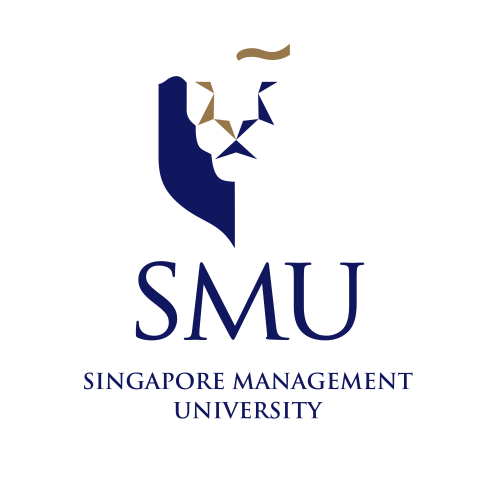
Real-world projects offer ideal conditions for teaching soft skills
You may also like
Our volatile, uncertain, complex and ambiguous world requires that universities equip students with more than technical proficiency. In this environment, employers value adaptability, empathy, teamwork and resilience, skills that will enable graduates to succeed in evolving workplaces. Higher education professionals face the challenge of weaving these soft skills into curricula in ways that are practical, authentic and sustainable.
The SMU-X programme offers one model of how this can be achieved. By connecting students with industry and community partners on real-world projects, it ensures that every course is both a lesson in subject knowledge and a platform for developing the competencies that matter most in times of uncertainty. Below are practical strategies, inspired by the SMU-X and SMU-XO (its overseas extension) programmes at Singapore Management University, that higher education professionals can apply to cultivate soft skills in their own institutions.
1. Integrate real-world projects into curricula
Real-world projects offer a practical yet powerful framework for embedding soft skills into learning. Each SMU-X course incorporates an industry or community project that spans an academic term. Faculty and industry partners work together to scope problem statements that are deliberately complex, ambiguous and authentic.
- Solving the soft skills crisis using artificial intelligence
- Three innovative authentic assessments to encourage soft skill mastery
- Spotlight guide: Soft skills for hard times
For HE professionals, the lesson is to treat ambiguity as a teaching tool. Projects should push students to apply theory to practice, identify key questions and test their assumptions. The role of the educator is to coach students in framing problems, iterating solutions and learning from feedback. This approach equips graduates with the capacity to adapt frameworks to any challenge, a skill that endures even as industries and roles evolve.
Faculty members might feel uncomfortable, too, as they have less control due to the ambiguous nature of real projects. This can be seen as an opportunity for personal growth for faculty members.
2. Build interdisciplinary teams
The modern workplace requires professionals to collaborate across functions. Encouraging interdisciplinary learning teams can prepare students for this. At SMU, students from business, law, computing and social sciences often work together on projects, mirroring the diversity of perspectives found in the real world.
Creating such teams requires deliberate design. Faculty can structure project groups to ensure disciplinary mix, then scaffold teamwork skills through tools such as team charters, peer evaluations and conflict-resolution workshops. These experiences teach students not only how to share knowledge but how to appreciate the expertise of others – cultivating empathy, respect and innovation.
3. Embed soft skills in every learning outcome
A common challenge is that soft skills are treated as “extras” outside the formal curriculum. However, skills such as innovation, reflection and communication can be embedded into every project deliverable. For example, students might negotiate project scope with industry partners, collaborate across disciplines and maintain reflective journals to enhance self-awareness.
The practical advice here is simple: don’t create separate modules for soft skills. Instead, integrate them into the way learning outcomes are assessed. Rubrics can include teamwork and communication criteria alongside technical performance. Reflection assignments can be tied to learning goals such as resilience or leadership. Not all skills need to be assessed at once. Instead, curricula can be aligned so that skills are evaluated throughout students’ educational experiences.
4. Facilitate critical thinking through practice
Critical thinking thrives when students grapple with complexity. Working on real-world projects, students must weigh evidence, question assumptions and consider both immediate and long-term impacts of their proposals.
To foster this, design activities that require evaluation, synthesis and creation. Importantly, critical thinking should be positioned not just as an intellectual skill but as a life skill and a way that supports sound judgements in the workplace, in civic life and in personal decision-making.
5. Embrace setbacks as a path to resilience
Resilience is best learned through experience. Project work can be demanding, and setbacks are common: students might face shifting scopes, partner constraints or cross-cultural misunderstandings. Faculty guide students in reflecting on these challenges, helping them identify adaptive strategies and constructive responses.
The message is to normalise failure as part of learning. Faculty should create safe spaces for students to discuss obstacles, model resilience by sharing your own experiences, and emphasise process as much as outcome. Reward students for displaying resilience as they learn from failure. Students who practise resilience in the classroom will carry it into their professional lives.
6. Offer global exposure and cross-cultural experiences
Soft skills extend beyond personal resilience; they include the ability to work across cultural and geographic boundaries. The SMU-X Overseas programme takes students abroad to collaborate with international partners and peers. These projects immerse students in different cultural contexts, requiring them to navigate diverse communication styles, norms and expectations.
The practical takeaway is that global citizenship can be cultivated without necessarily requiring long-term study abroad. Virtual collaborations with overseas partners, short-term immersion trips or joint courses with international universities can provide students with exposure to difference and diversity. Reflection activities are key: encourage students to articulate how these experiences changed their perspectives and what cultural intelligence looks like in practice.
7. Align projects with graduates’ future needs
Finally, align experiential learning with the evolving needs of employers and society. Close collaboration with industry partners ensures that projects reflect challenges in sustainability, digital transformation and inclusive growth. This makes learning outcomes not only academically rigorous but directly relevant to future career pathways.
Universities elsewhere can adopt similar approaches; engage local employers, NGOs or government agencies as project partners. When students work on problems that matter to real stakeholders, they practise the very skills that employers demand, such as communication, collaboration and leadership. Further, HE professionals can consider aligning projects with the strategic priorities or graduate learning outcomes of their university.
Centre soft skills in learning outcomes
Soft skills are not peripheral to higher education; they are central to preparing graduates for a world defined by volatility and complexity. Programmes like SMU-X and SMU-XO demonstrate how universities can intentionally integrate these skills into curricula by embedding real-world projects, fostering interdisciplinary teamwork, cultivating resilience and offering cross-cultural experiences.
For HE professionals, the challenge is to move beyond treating soft skills as add-ons. Instead, they must make them the foundation of learning outcomes, ensuring that every student leaves not only with disciplinary expertise but also with agility, empathy and resilience.
Kevin Koh is head of SMU-X in the Office of the Provost at Singapore Management University.
If you would like advice and insight from academics and university staff delivered direct to your inbox each week, sign up for the Campus newsletter.




